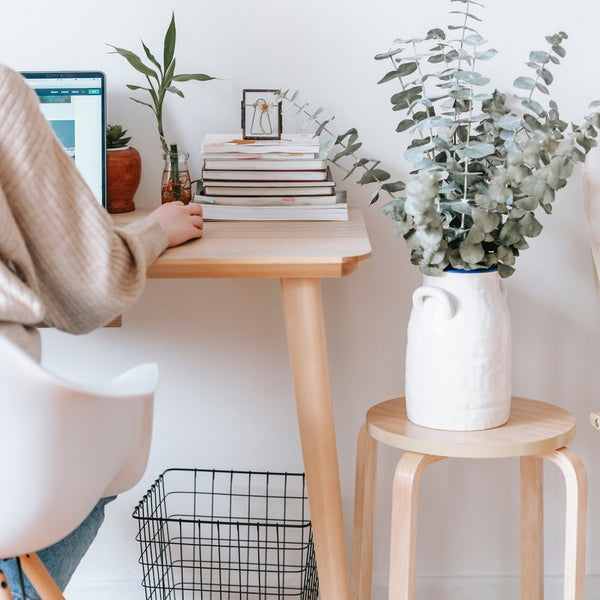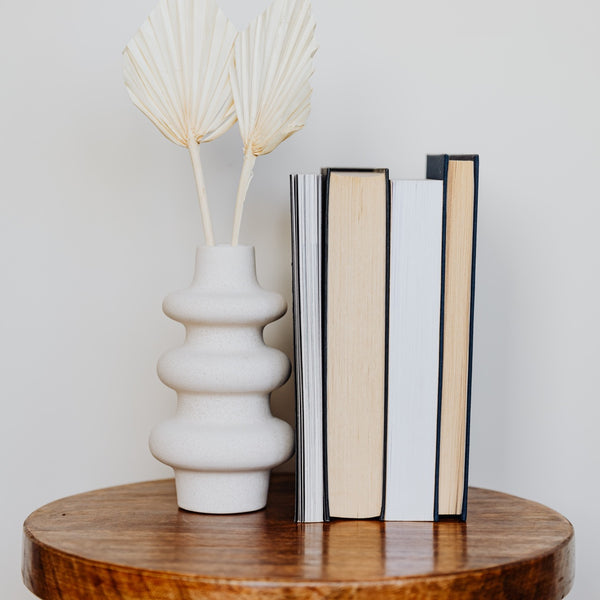Cultivate Your At Home Yoga Practice

The stress reduction and wellness benefits of Yoga especially resonate today. Unlike a traditional workout, Yoga offers a chance to deepen awareness, and brings you closer to your true nature. In the words of luminary master teacher Swami Ramananda, Executive Director and President of Integral Yoga Institute in San Francisco, “Our spiritual practice is a responsibility. We may not be able to open our doors to each other but we can open our hearts in countless ways to breathe goodwill and harmony into the collective consciousness.”

In addition to increasing natural flexibility, a regular Yoga practice can help you become more centered, focused, increase immunity, and even contribute to a more restful night's sleep. Since daily habits have shifted, and the universe has opened extra space, there's never been a better time to dedicate yourself to the teachings of Yoga. Even if you regularly take classes online, a daily practice offers a rare chance to cultivate an intimate connection to Yoga, in turn strengthening self-awareness.
On the path to structuring your practice, here are some aspects to keep in mind...
Seeds & Roots

Yoga is considered a practice, not a perfect one. So release judgement. Give yourself permission to freely explore. Set an intention for love and compassion toward yourself as you find your way... Asana is only one aspect of Yoga. So along with physical movements, think in terms of incorporating breath work and meditation. The beauty of a personal practice is, it's all yours. So make it satisfying and joyful, something you'll ultimately look forward to.
For an Ayurvedic perspective on creating a practice, Larry Mangel, NAMA Certified Ayurvedic Practitioner, founder of Shanti Yoga & Ayurveda, shared his thoughts. Very important, according to Larry, is knowing your constitution so you can learn to balance your body. “Ayurveda is a practice utilizing the concept of opposites heal, so cooler constitutions like Vata and Kapha, do well with warming sun salutations,” according to Larry. Another profound benefit of Sun Salutations, Larry explains, is they “move lymphatic fluids and help connect with the breath, building prana.”
Breathe (pranayama)

According to Ayurveda, Prana is the most important thing to build. “It is the life force,” says Larry. In addition to specific breathing practices, linking the breath as you move in asanas, creates inner calm and balances the nervous system. So observe your breath as you move your body. And mesh the Yogic three-part breath whenever possible: here's a video demonstrated by Kirpalu. Other breathing practices include, the highly soothing Alternate Nostril breathing which also balances the right and left hemispheres of the brain.
Balance

Larry suggests designing your daily practice to address your dosha. So… what might that look like? For example, Larry says, “Kapha lives in the upper stomach and chest. Practice backbends, and all chest-openers. Think about asanas that focus on the upper body and are uplifting to balance the kapha earth element.” Additionally, Larry recommends, Kapha's “require a more active practice stimulating their metabolism and increasing circulation.” In addition to Sun salutations, “Standing postures like Warrior II, increase circulation and open the chest. Bow pose is one of the most beneficial Kapha reducing poses bringing circulation to the body and mind,” according to Larry.
In contrast, Larry says that Pitta types do well with “cooling asanas and very relaxing breath, and postures that aim at releasing tension from the mid-abdomen, the small intestine and liver where Pitta accumulates.” Poses Larry suggests for Pitta types are “Seated twists help clean the liver. And forward bends are cooling.” Other poses Larry believes work well and focus on the core, include “Moon Salutations. Tree. Triangle. Half Moon, and Pachimottanasna.”
And “Vata types should never rush into practice,” says Larry. For Vata, bringing the mind into a calm space is essential. So, take time to slow down and deepen your breath. When doing poses, Larry says, “emphasize the pelvic region and colon, the main sites of Vata. Aim at releasing tension from the hips and lumbar spine. Keep the spine supple.” Which Asanas does Larry recommend for Vatas? “Spinal twists are excellent, making sure the breath is full or they will increase Vata. Forward bends, gentle backbends, and standing postures that emphasize strength, stability, grounding, and calm are very good,” says Larry.
Repetition

You create the parameters. So sequencing is up to you. Consider though, that there's a beauty in doing the same asanas and getting to know them in great detail. They become part of you, ingrained within your body's muscle memory. Select a balance of hatha, meditation, and breath-work. Keep in mind, time of day can be an important element that helps you keep the commitment; tune into your intuition, ask yourself what you need, and plan accordingly. Borrow from a beloved class, or formulate asanas that flow from one to the next with ease. The classic asana repetition, Sun Salutation (Surya Namaskara), comprised of twelve poses that flow from one to the next, offers a natural sequencing, ready to add to your practice, as well as Sun Salutation B; see video by Yoga With Adrienne; for another option, see Shiva Rea's Moon Salutation.
Alignment

Gain clarity about each asana. Be mindful to select poses, you’ve previously done with an instructor, and know correct alignment and modifications. At first, it's a good idea to practice each movement as slowly as possible, bringing focus to proper positioning of the joints. Additionally, learn as much as you can about each pose, including its health benefits. For more on alignment, check out A Beginners Guide to Anatomy Terms from Ekhart Yoga.
Safety & Warmups

Consider your body's sensitivities and strengths when selecting warmups. Based on the asanas you'd like to work on, take into account which parts of your body will be called upon most. Since you will be your own Yoga instructor, always limber up the joints before you go into hatha. Traditional warmups include: a gentle stretch to the back and spine in Cat Cow (Bitilasana Marjaryasana) open your hips with Butterfly pose (Baddha Konasana), (may strain knees), and Rock the Baby. Additionally, check out 10 Poses To Help You Warmup for Yoga.
Meditate

Hatha Yoga is considered meditation in action. And yet the mind/body/spirit benefits of meditation are vast and infinitely worthwhile. There are many ways to integrate meditation... Standing. Sitting. Walking. Listen to your body and determine what would feel right. You need not even close your eyes; Gazing Mediation is a powerful practice that deepens focus and concentration, done with eyes open.
Chakras

Care to mesh the chakras with your yoga practice? These energetic centers of the body connect to the physical and subtle bodies, and certain asanas awaken different chakras. One way to come into alignment, is to check in with your chakras each day; determine whether you are feeling balanced, or blocked, and allow this insight to guide your practice. Alternatively, you can dedicate each sequence to awakening a different chakra. The hope is to have all chakras working together in harmony. Additionally, read Chakras & Everyday Life.
Ultimately planning your Yoga practice is a true act of self-love and care. So be kind to yourself; use this time to deepen or establish an ongoing relationship with the principles of Yoga. In the words of Swami Ramananda, “The connection that is most meaningful and healing for us does not take place online but in the spiritual Self. Here, we can rest in a place that is unchanging and free, where we know no separation, and where natural compassion springs forward unbidden from the heart.”
*While Yoga studios are closed, limited zoom classes are available with Integral Yoga San Francisco as well as Shanti Yoga & Ayurveda.
*When partaking in Yoga, always make sure it is safe for you to practice. And refrain from doing any movements that cause discomfort.



